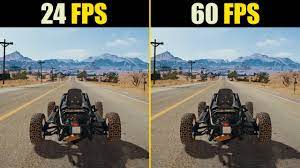Ever wondered why your games sometimes look like a slideshow and other times feel smooth as butter? Well, it all boils down to frames per second (FPS). But what’s the ideal FPS for gaming? Let’s dive in!
What is FPS and why is it important?
Imagine a flipbook: each individual page represents a frame. When you flip through quickly, the images come alive and create the illusion of motion. That’s essentially how your monitor displays games. The more frames per second it can display, the smoother and more responsive the gameplay will feel.
Here’s a breakdown of how FPS affects your gaming experience:
30 FPS: This is considered the minimum for playable games. It’s acceptable for slower-paced genres like turn-based strategy or puzzle games. However, action-packed games will feel sluggish and unresponsive.
60 FPS: This is the sweet spot for most gamers. It offers a smooth and responsive experience, ideal for fast-paced games like first-person shooters, racing games, and action RPGs.
120 FPS and beyond: This is where things get really smooth. You’ll notice a significant improvement in responsiveness and visual fluidity, especially in fast-paced games. However, high FPS requires powerful hardware and can be demanding on your computer.
How to find the right FPS for you?
The best FPS for you depends on several factors:
Your game: Different genres benefit from different FPS levels. As mentioned earlier, slower games can run smoothly at 30 FPS, while fast-paced ones require 60 FPS or higher for a good experience.
Your hardware: Your computer’s graphics card and processor determine how many frames it can push out per second. If you have a budget PC, 30-60 FPS might be realistic. But if you have a high-end gaming rig, you can aim for 120 FPS or even higher.
Your monitor: Your monitor’s refresh rate determines how many times it can update the image per second. It needs to match your FPS or else you’ll experience screen tearing (where the image appears to be ripped in half).
Your personal preference: Some gamers are more sensitive to lower FPS than others. Experiment and see what feels comfortable and smooth for you.
Tools to measure your FPS: FPS Testers
There are several tools available to measure your FPS in-game. Some popular options include:
Subgadgets: One of the coolest subgadgets is the FPS tester. Think of it like a fitness tracker for your games. It measures how many frames per second (FPS) your system is pumping out, giving you an idea of how smooth your gameplay is. Low FPS? Don’t worry, the tester can help you identify bottlenecks and tweak settings to get back to buttery-smooth gaming.
Fraps: A classic tool that provides detailed FPS information and benchmarks.
MSI Afterburner: Offers a comprehensive set of features, including FPS monitoring, temperature monitoring, and overclocking.
Steam FPS Counter: A simple built-in tool in Steam that displays your FPS in-game.
NVIDIA GeForce Experience: Offers FPS monitoring and recording capabilities for NVIDIA graphics card users.
These tools will help you understand your current FPS and see how it changes depending on your settings and hardware.
What about competitive gaming?
For competitive gamers, every millisecond matters. Higher FPS translates to faster reaction times and a smoother competitive edge. In esports tournaments, professional gamers often aim for 144 FPS or even 240 FPS for maximum responsiveness.
However, for casual gamers, the difference between 60 FPS and 120 FPS might not be as noticeable. Ultimately, the best FPS for competitive gaming depends on your skill level, the game you’re playing, and your personal preference.
Striking the balance: Optimal FPS vs. Hardware limitations
While higher FPS is generally better, it’s important to find a balance between performance and graphical quality. Pushing your hardware to its limits for the highest FPS might result in lower graphics settings and a less visually appealing experience.
It’s important to experiment and find the sweet spot where you get the best balance of FPS, graphical fidelity, and performance that suits your needs and budget. Remember, a smooth and enjoyable gaming experience is key, not just chasing the highest FPS numbers.
Conclusion
The debate over the ideal FPS for gaming will likely continue. Hardware is constantly evolving, pushing the boundaries of what’s possible. However, the core principle remains: find the FPS that offers you the smoothest and most enjoyable gaming experience.
Whether you’re a casual gamer or a competitive esports enthusiast, understanding FPS and its impact on gameplay will help you optimize your setup and maximize your gaming enjoyment. Now go out there and frag on!


